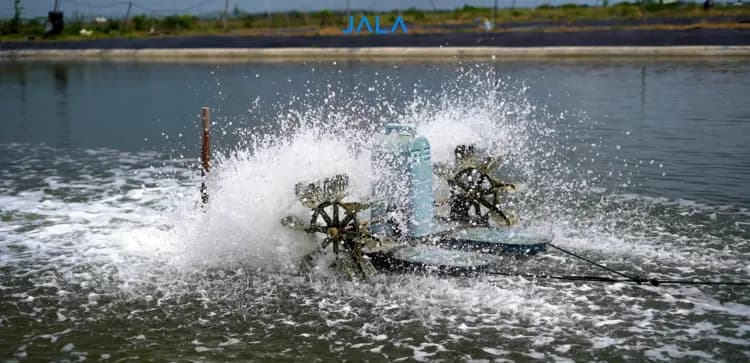
Bacteria play a significantly broad role in shrimp farming, bringing both positive and negative effects. In supporting cultivation, bacteria can maintain water quality and shrimp health, where they are used in probiotic treatment. Before using probiotics in cultivation, you need to know the different types and how to apply them.
Selecting probiotics
Probiotics may consist of one or multiple species of bacteria. Each of them serves specific functions and activities. In a probiotic consisting of Bacillus spp., Nitrosomonas spp., and Paracoccus pantotrophus, Bacillus spp. breaks down organic matter and controls the population of Vibrio spp. bacteria as well as phytoplanktons. Nitrosomonas spp. controls the concentrations of ammonia and nitrite, while Paracoccus pantotrophus controls hydrogen sulfide production.
Choosing probiotics based on their composition is essential as it relates to farm conditions and treatment purposes. Bacillus spp. probiotics are used to fix water quality through the balancing of the microbial population while reducing pathogens and limiting the use of chemical compounds, thus contributing to the growth and health of shrimp.
Probiotics containing Lactobacillus bacteria are one of the fermentation microorganisms. When present in feed, they can improve the quality of the feed, thereby enhancing its digestibility, which can ultimately promote shrimp growth.
The requirements for probiotics to work effectively include the ability to adapt to the environmental conditions (physical and chemical) of shrimp ponds, the ability to survive in low temperatures and high concentrations of organic acids in the digestive tract, not producing harmful toxic compounds for shrimp, and the ability to live and be metabolized in the shrimp's gut.
Applying probiotics
In aquaculture, probiotics can be applied through feed or water. They can be mixed in feed ingredients or the water medium by administering it into the pond water.
Some probiotics need to be activated through fermentation, such as those that target shrimp digestion. Usually, these probiotics are mixed with shrimp feed so they have a better chance at ending up in shrimp digestion.
Probiotics are beneficial for reducing ammonia, nitrate, nitrite, hydrogen sulfide, and organic waste, and lowering the risk of disease infections. Probiotics also directly impact shrimp growth by increasing biomass, survival rate (SR), shrimp weight (ABW), daily growth (ADG), and reducing feed conversion ratio (FCR).
The most important aspect of using probiotics in the cultivation of vannamei shrimp is the type and dosage used. The type is related to the purpose of probiotic administration because specific bacterial compositions of probiotics are sometimes required. Dosage is linked to the strength of the probiotic adjusted to farmers’ needs. Lastly, the use of probiotics also depends on the cultivation method adopted by the farm manager or technician, and thus cannot be generalized for all shrimp cultivation practices.





